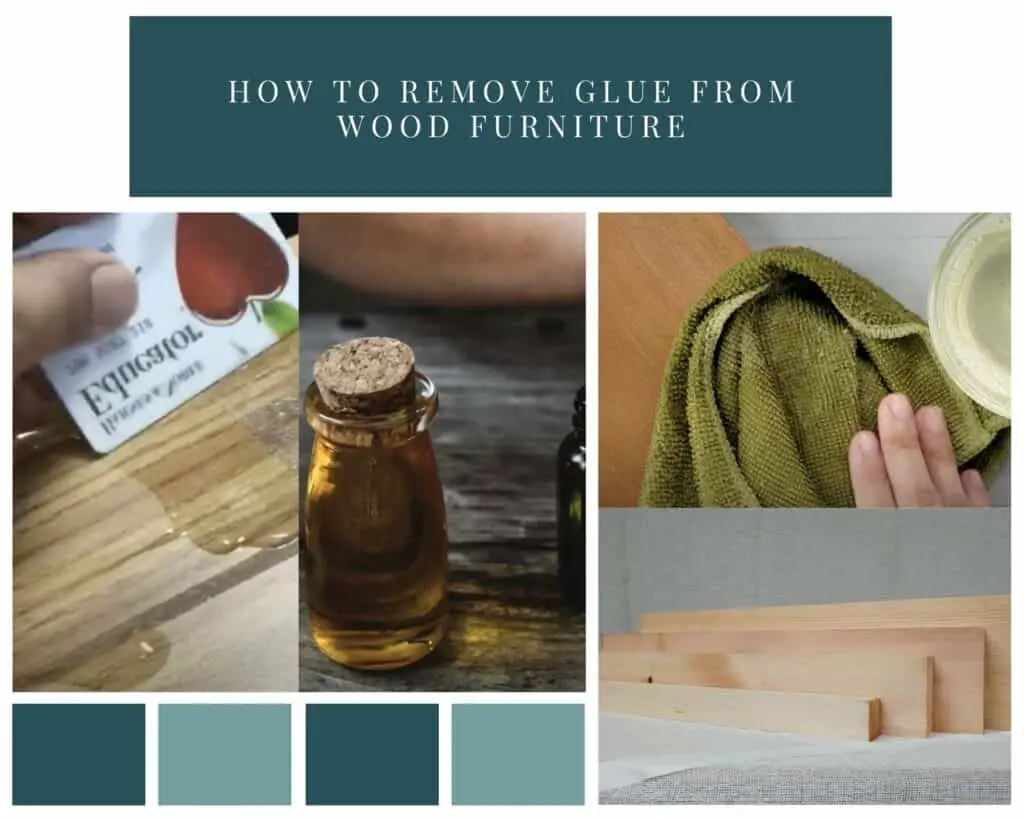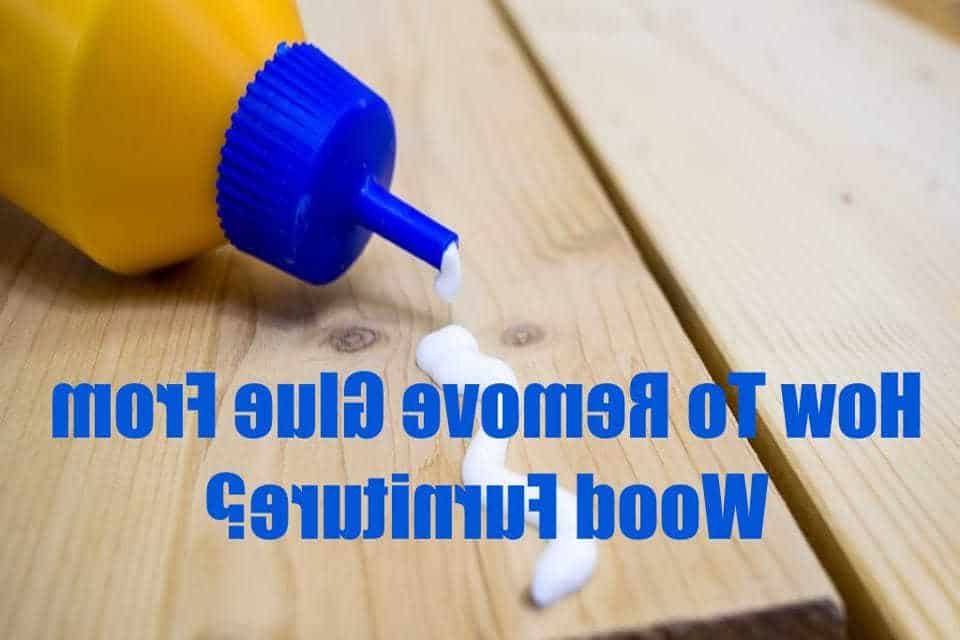
When operating with antique furniture, an adhesive may be a valuable tool since it makes dealing with the material much simpler. Super glue or adhesive creates a solid and long-lasting bonding, but it can be difficult to remove.
Glue Care will show you how to remove glue from wood furniture at home without leaving any stains or damage in this post.
The process goes through five steps:
- Scrape any remaining adhesive
- Use furniture polish
- Try nail polish cleanser
- Apply mineral oil
- Wipe down
Let’s read on to know more details!
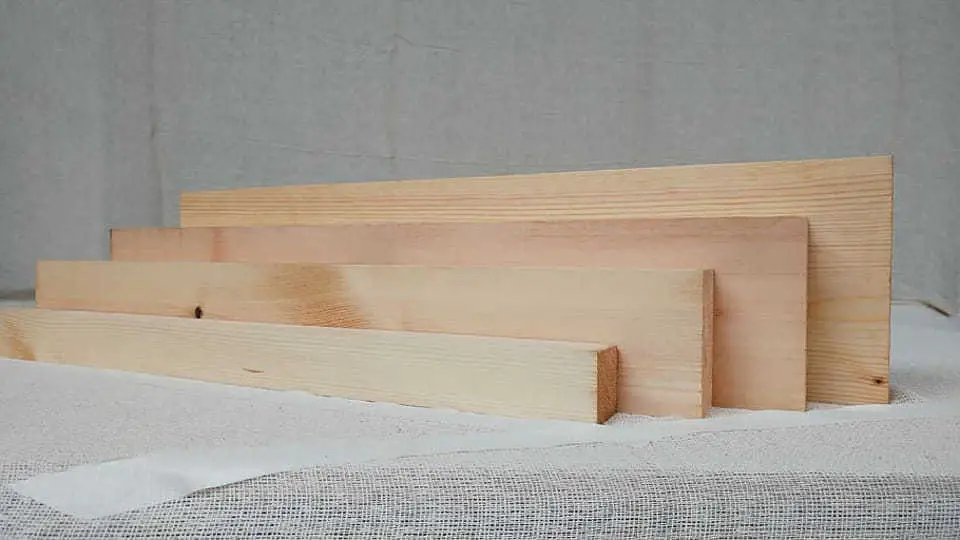
To prevent wooden surfaces from being ruined, start with the gentlest method and work up to stronger, more abrasive treatments as needed.
Remember to look at the adhesive supplier for the best guidance on removing specific types of glue—they’ll almost certainly provide instructions for cleaning the sticky spots from wood after a spill.
If you have kept the bottle, look for removal instructions on the label or go to the manufacturer’s website for further information.
Things You Will Need
Tools
- Cleaning rags
- Unused credit card
Materials
- Nail varnish remover
- Furniture polish
- Mineral oil
- Cotton swabs or cotton balls
Step-By-Step Guides
You can rely on the instructions in this video or the following steps to better understand how to remove glue from antique furniture.
Step 1: Scrape Any Remaining Adhesive

If there is a lot of adhesive or glue on the wood, scrape it off using an old card (or anything similar with a sharp edge).
If you require a more potent instrument, use a sharp blade for more significant glue spots or a razor blade for small patches of dried adhesive, especially carpenter’s adhesives.
You will have to scrape the glue away in layers, so be cautious as you get closer to the adhesive’s bottom and the hardwood itself.
Step 2: Use Furniture Polish

After physically removing extra adhesive from the surface, try removing the adhesive with furniture polish.
Apply the polish immediately on the sticky glue and rub it in gently with a towel. It may aid in removing the bond or adhesive, and you will be finished with the work.
Step 3: Try Nail Polish Cleaner
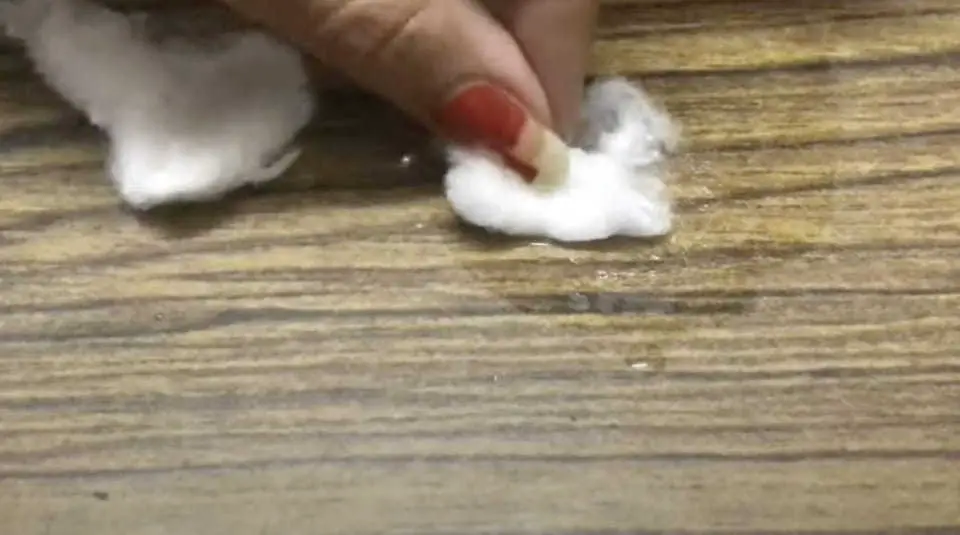
Use an acetone nail polish remover or alcohol to remove spilled adhesive from wooden furniture, especially super glue.
Soak cotton swabs or cotton balls in nail varnish remover and wipe the balls over the bond with a gentle touch, then pull it up using a butter knife or your fingernail. Remember to avoid damaging the finish.
Step 4: Apply Mineral Oil
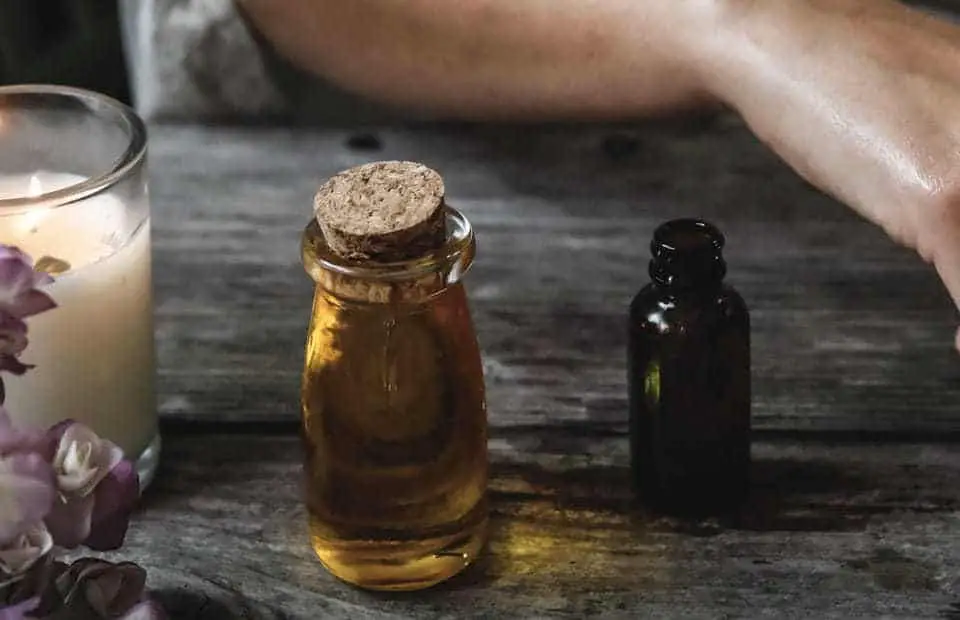
Pour a little quantity of mineral oil on the spilled glue and rub it using a clean cloth if the nail varnish remover does not work.
If you only get mineral spirits on hand, prepare a spirits-oil combination by mixing it one-to-one with olive oil and softly pouring it to the adhesive location.
Step 5: Wipe Down
Wipe the woodwork with a clean towel to finish the cleaning process.
Bonus Tips:
- When conducting a creative project that needs adhesive or glue, always put down a protective coating to safeguard your wooden furniture.
The bond will not attach to the furniture if you use old newspapers, plastic wrap, or drop cloth.
- Test solutions in a tiny, inconspicuous region before using it, especially if it is one you are unfamiliar with. Remember that many wooden flooring and furniture have a finish like polyurethane or lacquer on it.
In this situation, you eliminate the adhesive from the surface rather than the hardwood; make sure the remover does not harm the finish.
FAQs
Is There A Commercial Product To Remove Glue From Wood?
Consider utilizing a specialized adhesive remover to get rid of sticky glue spots. Check to see if the product is suitable for use on wood.
Goo Gone, for instance, is widely used to remove adhesive and sticker remains from a variety of surfaces, including timber.
Use standard measures such as donning safety gear and opening the windows to improve airflow. To remove a sticker from antique furniture or remove a glue spot, follow the recommendations on the package.
You may wind up putting the solution straight onto the stain or onto a cloth. Wipe the area with a clean towel once you’ve cleaned off the adhesive.
How To Sand To Eliminate The Sticky Residues Off The Wood?
Use sandpaper to scrape off the adhesive residue as the last option for removing adhesive from wood.
Remember not to scratch the wood, especially if it’s a fragile surface like a wooden floor. Wear protective gloves and safety eyewear to safeguard yourself.
With 600-grit sandpaper, gently wipe the glue staining until it is level with the board. Sand just the glue, not the wood, while sanding. Switch to finer 1200-grit sandpaper and scrape until all of the adhesives are gone.
Using a clean towel, wipe away all glue flakes. Add a wood polish that matches the previous coating if you removed any of the finish during sanding. You may also add varnish to the wooden surface to make it shine.
Can I Use A Hair Dryer To Get Rid Of Sticky Remains?
Heat softens glue, making it simpler to remove it from wood. To avoid harming the wooden surface, use a hairdryer with its lowest heat. Maintain a distance of three inches from the wooden surface.
Keep the hair dryer for 25 seconds if the stain is sticky. After that, use a scraper, cloth, or hand towel to remove the loosened glue carefully. With a clean towel, wipe away any lingering residue.
Conclusion
The adhesive may get on the wood at any time and ruin its excellent finish. You should have no trouble getting rid of the sticky marks if you follow our step-by-step method.
We expect that these instructions on how to remove glue from wood furniture without damaging the surface.
Thank you for reading!
Related areticle:
- How To Glue Granite To Wood? Refresh Your Furniture Design
- How to Glue Wood to Concrete: A Guide for DIYers
